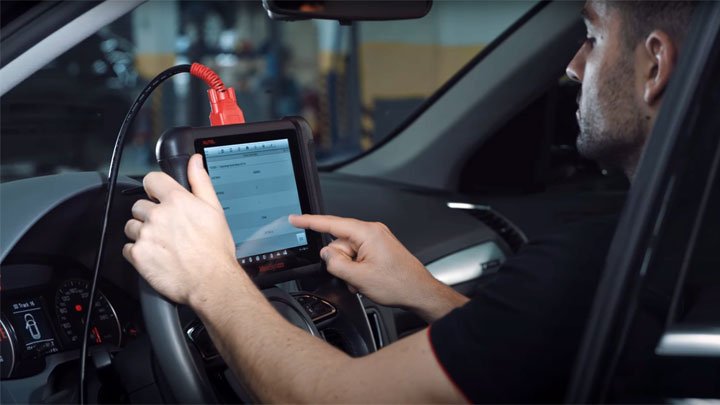Understanding Car Key Transponder Programming
In today's automotive landscape, the integration of advanced technology has ended up being synonymous with vehicle security. Among the most substantial advancements in this area is the intro of transponder keys. Car key transponder programming is a necessary procedure that makes sure lorries are safe from unapproved access while supplying convenience to owners. This post explores what transponder keys are, how they work, the programming process, and responses to some frequently asked concerns.
What is a Transponder Key?
A transponder key is a type of ignition key that includes a small ingrained microchip. This chip communicates with the vehicle's immobilizer system. Transponder keys are developed to enhance vehicle security by preventing hot-wiring and unapproved engine begins.
Key Features of Transponder Keys:
- Embedded Microchip: Each key contains a distinct code that represents the vehicle's ignition system.
- Immobilizer System: This system recognizes the key's special code and allows the engine to begin only if the appropriate key is used.
- Enhanced Security: Transponder keys are substantially more difficult to duplicate than traditional keys, minimizing the risk of theft.
How Transponder Keys Work
Transponder keys run on a straightforward concept of radio frequency recognition (RFID). When the key is placed into the ignition or brought near the vehicle, the following series happens:
- Signal Transmission: The vehicle's ignition system sends a radio signal to the transponder key.
- Code Response: The embedded chip in the key gets this signal, activates, and sends back its special code.
- Confirmation: The vehicle's computer system confirms the gotten code. If My Web Site matches the stored code, the engine will begin; if not, the engine stays paralyzed.
Benefits of Transponder Technology:
- Improved theft prevention.
- Convenience of keyless vehicle beginning (in some systems).
- Reduced expenses associated to insurance coverage premiums due to boosted security steps.
The Car Key Transponder Programming Process
Programming a car key transponder is a crucial step that allows a brand-new key to communicate with the vehicle's immobilizer system. The procedure can vary based upon the make and design of the car but normally consists of the following steps:
Steps Involved in Transponder Key Programming:
- Obtain a New Transponder Key: Owners need to initially obtain a blank transponder key suitable with their vehicle.
- Access the OBD-II Port: For modern vehicles, programming generally requires an On-Board Diagnostics (OBD-II) scanner that connects to the OBD-II port.
- Switch on the Ignition: The ignition needs to be turned to the "On" position without beginning the engine. car key replacement company permits the system to recognize that a new key is to be set.
- Follow Programming Procedure: Depending on the vehicle, follow the specific programming actions provided by the maker, normally outlined in the owner's handbook. This might involve pressing specific buttons in a particular order.
- Evaluate the Key: After programming, it's essential to check the key by attempting to start the engine. If successful, the key is correctly set.
Tips for Successful Programming:
- Consult a professional locksmith or dealer for complex programming treatments.
- Make sure battery levels in the key fob and vehicle are adequate.
- Follow the directions carefully to avoid mistakes.
Common Issues with Transponder Key Programming
In spite of the seemingly simple process, different issues might develop during programming. Below are some typical challenges:
- Key Compatibility: Using an incompatible key can lead to programming failures.
- Faulty Equipment: A malfunctioning OBD-II scanner may avoid access to the programming menu.
- Weak Key Batteries: Insufficient power in the key fob can interrupt communication.
Regularly Asked Questions (FAQs)
1. Can I configure my transponder key myself?
While numerous cars enable DIY programming, some models require customized devices or software. If unsure, it's finest to seek advice from an expert locksmith or your vehicle dealer.
2. What if I lose my transponder key?
If a transponder key is lost, it's a good idea to get in touch with a licensed automotive locksmith or your dealership for a replacement. They can set a new key based on your vehicle's VIN (Vehicle Identification Number).
3. How much does it cost to set a transponder key?
The cost differs extensively, depending upon the vehicle make and model, and whether you choose to go through a car dealership or a locksmith. Prices typically range from ₤ 50 to ₤ 150.
4. What takes place if my transponder key quiting working?
If your transponder key stops working unexpectedly, it could be due to a dead battery or concerns with the vehicle's immobilizer system. It's suggested to have both the key and the vehicle checked by a professional.
5. How frequently should I change transponder key batteries?
Transponder key batteries need to be changed every 2 to 3 years, though this can vary based on usage. Indications of a passing away battery consist of trouble beginning the vehicle or the key fob not working at all.
Car key transponder programming is an important procedure for modern vehicle security and benefit. Understanding how transponder keys function and how they are set can empower vehicle owners to handle their vehicle security efficiently. As technology continues to develop, remaining informed about these developments will assist owners safeguard their possessions and guarantee their automobiles run smoothly.
Summary Table: Key Features of Transponder Keys
| Feature | Description |
|---|---|
| Embedded Microchip | Includes a distinct code for vehicle identification |
| Immobilizer System | Prevents unapproved engine starts |
| Enhanced Security | Difficult to duplicate compared to traditional keys |
With advancements in technology, the value of understanding and efficiently managing car key transponder systems can not be overemphasized. car key button fix protects your investment however likewise guarantees comfort on the roads.

